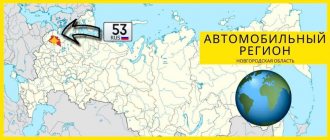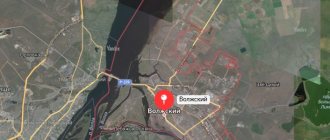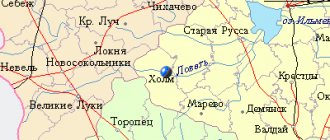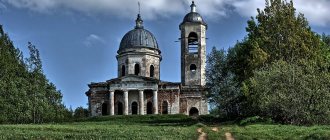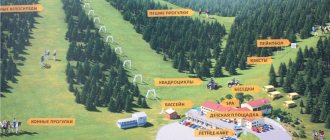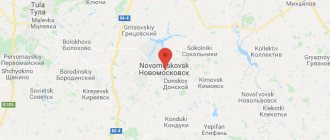City in Novgorod Oblast, Russia
| Soltsy Soltsy | |
| City [1] | |
| Memorial of the Great Patriotic War in Soltsy | |
| Coat of arms | |
| Location of Soltsa | |
| Soltsy Location of Soltsa Show map of Russia Soltsy Soltsy (Novgorod region) Show map of Novgorod region | |
| Coordinates: 58°08'N 30°19'E / 58.133°N W. 30.317°E / 58.133; 30.317 Coordinates: 58°08'N 30°19'E. / 58.133 ° N W. 30.317°E / 58.133; 30,317 | |
| A country | Russia |
| Federal subject | Novgorod region [1] |
| Administrative region | Soletsky district [1] |
| City of district significance | Soltsy [2] |
| First mention | 1390 [3] |
| City status from | 1927 |
| Height | 30 m (100 ft) |
| population size (2010 Census) [4] | |
| • General | 10 086 |
| • Evaluate (2018) [5] | 8 803 (-12,7 % ) |
| Administrative status | |
| • Capital from | Soletsky district [1], the city of Soltsy of regional significance [2] |
| Municipal status | |
| • Municipal district | Soletsky municipal district [6] |
| • Urban village | Soletsk urban settlement [7] |
| • Capital from | Soletsk municipal district [6], urban settlement Soletskoye [7] |
| Timezone | UTC+3 (MSK[8]) |
| Postal code [9] | 175040–175042 |
| Dialing code(s) | +7 81655 |
| OKTMO ID | 49638101001 |
Soltsa
(Russian: Soltsa) is a city and the administrative center of Soletsky District in Novgorod Oblast, Russia, located on the left bank of the Sheloni River, 78 km (48 mi) southwest of Veliky Novgorod, the administrative center of the region. Population: 10,086 people (according to the 2010 census); [4] 11,264 (2002 census); [10] 11,782 (1989 census). [eleven]
History[edit]
Soltsy, whose name is associated with nearby sources of salt water, [ citation needed
] was first mentioned in the chronicle in 1390 and subsequently played an important role as an intermediate station on the trade route connecting Novgorod and Pskov. [3] In 1471, the Battle of Shelon took place near Soltsy between Moscow troops led by Ivan III and the army of the Novgorod Republic, which marked the end of the political independence of the Novgorod Republic. [3] Over time, Soltsy became part of the Moscow state. [3]
As part of the administrative reform carried out in 1708 by Peter the Great, the territory became part of the Ingermanland Governorate (known since 1710 as the Saint Petersburg Governorate). [ citation needed
] In 1727, a separate Novgorod Governorate was created, and in 1772 the Pskov Governorate was formed (which existed from 1777 to 1796 as the Pskov Viceroyalty).
[ required citation
] In 1776, the Porkhov district was transferred from the Novgorod province to the Pskov province.
[ citation needed
] Soltsa was the residence of the Soletskaya ox from Porkhovsky district.
[ citation needed
]
In August 1927, the districts were abolished, and on October 1, 1927, the Soletsky district was formed with the administrative center in Soltsy. [12] The Pskov Governorate was abolished, and the district also became part of the Novgorod Okrug in the Leningrad Region. [12] At the same time Soltsy received the status of a city. [ citation needed
] On July 23, 1930, the districts were abolished, and the districts were directly subordinated to the region. [12] From July 13 to July 16, 1941 and from July 22, 1941 to February 21, 1944, Soltsy was occupied by German troops. [13]On July 5, 1944, Soltsy, together with the Soletsky district, was transferred to the newly formed Novgorod region. [13]
Development of the city: from 1927 to the present day
In 1927, the city was transformed into the center of the Soletsky district of the Leningrad region. But after the administrative division, he began to report directly to the Leningrad Oblast Executive Committee.
During the Great Patriotic War, under the influence of the fascist occupation, most of the buildings and structures of the city of Soltsy were destroyed. But after its completion, the city was practically rebuilt from scratch, while restoring a large number of architectural and urban planning monuments. That is why Soltsy is considered a historical settlement.
Economics [edit]
Industry[edit]
The main industries in Soltsy are the electronics and food industries. [3]
Transport[edit]
The railway connecting St. Petersburg and Nevel via Dno crosses the area from north to south and passes near Soltsy. The railway connecting Bologoe and Pskov via Staraya Russa crosses the southern tip of the district; However, there are no significant stations on this line in the region.
The city is located on the Veliky Novgorod - Pskov highway, and is also connected by road with Staraya Russa through Volot.
The Shelon River is navigable below Soltsy; however, there is no passenger navigation.
Soltsy
(Novgorod region)
OKATO code:
49238501
Founded:
1390
City since:
1914 City of district subordination (Soletsky district, Novgorod region)
Center:
Soletsky district
Telephone code (reference phone)
| 81655***** | 30-200 |
Deviation from Moscow time, hours:
0
Geographic latitude:
58°07′
Geographic longitude:
30°19′
Altitude above sea level, meters:
30 Sunrise and sunset times in the city of Soltsy
Links[edit]
Notes[edit]
- ^ abcde Law No. 559-OZ
- ^ abc Resolution No. 121
- ^ a b c d e Our district (in Russian). Administration of the Soletsky municipal district of the Novgorod region. Retrieved May 27, 2014.
- ^ a b Federal State Statistics Service (2011). “All-Russian Population Census 2010. Volume 1" [All-Russian Population Census 2010, vol. 1]. All-Russian Population Census 2010 [All-Russian Population Census 2010]
. Federal State Statistics Service. - "26. The size of the permanent population of the Russian Federation by municipalities as of January 1, 2021". Federal State Statistics Service. Retrieved January 23, 2021.
- ^ ab Law No. 284-OZ
- ^ abc Law No. 399-OZ
- "On the Calculation of Time". Official Internet portal of legal information
. June 3, 2011. Retrieved January 19, 2021. - Post office. Information and computing center of OASU RPO. ( Post office
).
Search for postal service objects ( postal Search for objects
) (in Russian) - ↑
Federal State Statistics Service of Russia (May 21, 2004).
“The population of Russia, the constituent entities of the Russian Federation as part of federal districts, urban settlements, settlements, settlements is 3 thousand or more people” [Population of Russia, its federal districts, federal districts, districts Urban settlements, rural settlements - administrative centers and rural settlements with a population of over 3,000] (XLS). All-Russian Population Census 2002
. - “All-Union Population Census of 1989. The current population of union and autonomous republics, autonomous regions and districts, territories, negative phenomena, urban settlements and rural district centers” [All-Union Population Census of 1989: current population of union and autonomous republics, Autonomous regions and districts , territories, regions, districts, urban settlements and villages performing the functions of district administrative centers. All-Union Population Census of 1989 [All-Union Population Census of 1989]
.
Institute of Demography of the National Research University: Higher School of Economics [Institute of Demography of the National Research University: Higher School of Economics]. 1989 - via Demoscope Weekly
. - ^ abc Snytko et al., p. 85
- ^ a b Snytko et al., p. 135
- Monuments of history and culture of the peoples of the Russian Federation (in Russian). Ministry of Culture of Russia. Retrieved June 2, 2016.
- Soletsky Museum of Local Lore (in Russian). narod.ru. Retrieved March 29, 2012.
Sights of the city of Soltsy (Novgorod region)
The ancient buildings of the central districts give the city an outstanding and unique chic: merchant houses, the Intercession wooden church, Ilyinsky Cathedral of the 1920s. The 840th Bomber Aviation Regiment, part of the 37th Strategic Air Army, is located in the suburbs. In the former home of the merchant Krasikov, there is a rather interesting and unusual city museum, where you can admire various works of art by local masters of painting and decorative art. The diverse buildings of ancient estates and the picturesque green park will amaze with their beauty and grandeur. Here everyone is invited to visit the Vasilkov family estate in the village of Vybyti, which is located 10 km from the locality in question. This is why the city of Soltsy (Novgorod region) is so popular among tourists. Numerous cultural institutions make it a very interesting area for visitors. Here you can visit the famous house of culture, the city leisure center, where there is a weaving circle, a spiritual chanting association, and a drawing studio. It is also worth visiting the district library, which is actively involved in reviving folk customs and supporting crafts. The Novgorod branch of the regional philharmonic operates in the city.
Population
Population 1856 1897 1926 1931 1959 1970 1979 1989 1992 1996 4900 ↗5500 ↘4300 ↘3500 ↗9082 ↗9357 ↗11,672 ↗11,782 ↗ 11,900 ↗12,800 1998 2001 2002 2003 2005 2006 2007 2010 2011 2012 ↗12,900 ↘12 700 ↘11,264 ↗11,300 ↘11,000 ↘10,800 ↘10,700 ↘10,086 ↗10,100 ↘9563 2013 2014 ↘9393 ↘9267
Working-age population - 7.6 thousand . person (or 59.6%), younger than able-bodied age - 2.8 thousand people (21.7%), over working age - 2.4 thousand people (18.7%).
The number of officially registered unemployed as of January 1, 2002 was 111 people, the unemployment rate was 1% of the working-age population.
Labor resources are characterized by fairly high qualifications and a low level of employment. The ability to attract skilled and less expensive labor provides certain advantages to the city.
Cities
Soltsy city
- a city in Russia, the administrative center of the Soletsky municipal district of the Novgorod region, the largest settlement of the Soletsky urban settlement. The population as of the end of 2011 is actually 11 thousand inhabitants. Soltsy is located 80 km southwest of Veliky Novgorod on the left bank of the Shelon River at the mouth of the Krutets River in an area with numerous salty springs, to which the city owes its name. The city is located on the Veliky Novgorod - Porkhov - Pskov highway. There is a Soltsy railway station on the St. Petersburg railway of the Vitebsk branch of the Oktyabrskaya railway St. Petersburg - Dno - (Kyiv, Minsk, Pskov, Chisinau).
Education in the city of
Soltsy
A children's music school operates successfully in Soltsy, in which more than 140 children study. Along with traditional departments (piano, strings, folk instruments), there are choral and choreographic departments.
Economy
of the city of Soltsy
(production of magnetic cores), JSC Fang (gloves, mittens). Two food processing plants, a bakery. In the Soletsky region flax, potatoes, and grain crops are grown. Meat and dairy cattle breeding. Deposits of limestone, brick clay, sand and gravel mixtures, peat.
History of the city of
Soltsy
In 1239, one of the fortress settlements called Gorodok, which is located 3 km from Soltsy, was founded by Prince Alexander Nevsky to protect the Novgorod lands from enemies. The first mention of Soltsy in written sources dates back to 1390. The Novgorod chronicle says: “In the summer of 1390, the Novgorodians walked with Prince Semyon Olgerdovich... and stopped in Soltsa...” Since ancient times, the village of Soltsa, then the settlement and merchant settlement Soltsy was an important transit point on the trade route from Novgorod to Pskov. In 1471, the troops of the Grand Duke of Moscow Ivan III, marching along the right bank of the Shelon, crossed it near Soltsy and completely defeated the troops of the Novgorodians. This battle went down in history under the name Shelonskaya, which played an important role in the reunification of the Novgorod lands with the lands of a single Russian state. Today, on the site of the battle stands the building of the most beautiful church in the Soletsky district named after the Holy Apostle John the Theologian. In December 1579, Tsar Ivan IV the Terrible issued a decree on organizing a wheeled settlement in Soltsa. The wheelwrights, freed from taxes, had to make wheels and carriages for cannons. Thus, for 200 years, the wheeled settlement supplied the Russian army with its products. As Soltsa developed from village to village, then to shtetl, its administrative significance grew. On March 10 (23), 1781, Catherine II issues a decree: “... to establish the Soltsy settlement... as a settlement...” (Complete Collection of Laws of the Russian Empire, volume XXI). Train station Soltsy M.-V.-R. and. On May 10 (23), 1914, “By the highest approval of the Council of Ministers,” Soltsy Posad was transformed into a city. After the outbreak of the First World War in 1915, the city received the status of a resort city, since the Bogovsky merchant family opened a sanatorium for wounded officers in one of their estates. Later, at the end of the 1920s, a balneological and mud resort was organized on the basis of the sanatorium, which had three sources of mineral water belonging to the group of North Caucasian Narzans. There was enough water not only for local needs, but also for bottling in special bottles. This was done by a mineral water plant opened nearby. Throughout its history, the Soletsk land has undergone various administrative changes. In 1927, according to a new administrative division, Soltsy became a city - the center of the Soletsky district in the newly created Novgorod district of the Leningrad region; in 1930, the division into districts and the Soletsky district became subordinate directly to the Leningrad Oblast Executive Committee. Since 1944, Soltsy has been the regional center of the newly formed Novgorod region. During the Great Patriotic War from 1941 to 1944, the city was under fascist occupation; many buildings, including the resort, were destroyed or burned. In the post-war period, Soltsy was rebuilt, a flax mill, six bases of construction organizations, a hospital, a cultural center, three kindergartens, a regional communications center, two secondary schools, a music school, a department store, and comfortable residential buildings were built by the decision of the board of the Ministry of Culture of the Russian Federation. Soltsy is classified among the historical settlements of Russia. In total, the city has 55 monuments of urban planning and architecture, which Solsk residents strive to preserve. The 840th Heavy Bomber Aviation Regiment, part of the 37th Strategic Air Army, is located near the city.
City today:
The city is unique in its historical buildings that have survived to this day with merchant mansions and shops, religious buildings: an Old Believer chapel, a wooden Church of the Intercession of the 18th century, and the existing Ilyinsky Cathedral, built in 1824-1825 in the style of classicism.
Restoration work has been underway in the Ilyinsky Cathedral for several years in order to return the temple to its original appearance. In 1999, a dome weighing more than 4 tons was installed on its bell tower and the cathedral finally acquired its completed appearance.
10 km from Soltsy in the village of Vybiti there is the family estate of the Vasilchikov princes with a picturesque park and numerous buildings. The estate is the ancestral patrimony of four generations of princes Vasilchikov. Illarion Vasilyevich - hero of the War of 1812, member of the State Council. Alexander Illarionovich is a Russian public figure and writer, who was a second in the duel between Lermontov and Martynov. Viktor Alexandrovich - military and statesman, general, hero of the Crimean War. Boris Alexandrovich - leader of the Novgorod provincial nobility, minister of land management and agriculture in Stolypin's cabinet, member of the State Council. The nature of the Soletsky region attracted many talented people. Writers M. M. Prishvin, V. Ya. Shishkov, I. S. Sokolov-Mikitov, artist K. S. Petrov-Vodkin, composers P. I. Tchaikovsky, T. N. Khrennikov, academician A. P. Karpinsky. In addition to the fact that the Soletsk land often saw celebrities, it itself gave the world many talented people. Among them, the most famous are the names of Konstantin Yakovlevich Vanyukov, a poet who in the 20s was published in St. Petersburg magazines under the pseudonym “Shelonsky”, Ilya Iosifovich Kushnir, who for a long time served as the chief architect of Novgorod. Soltsy is the ancestral home of Leonid Mikhailovich Polyakov, architect (author of the Volga-Don Canal projects, the main entrance of the All-Russian Agricultural Exhibition, the Leningradskaya Hotel, the Kurskaya-radial, Kaluzhskaya, Arbatskaya metro stations in Moscow, the Pushkinskaya metro station in Leningrad).
Hero of the Soviet Union Bogdanov, Viktor Ivanovich, was born (1918) in Soltsy.
Since 1994, in the former house of the merchant Krasikov, the Center for Artistic Creativity has been opened, where the best works of painting by Solletsk artists and masters of decorative and applied arts are collected. During the year, 46 exhibitions of works by artists and craftsmen from the Novgorod region were held here. An amateur association of spiritual singing, a fine arts studio in three types of activities (painting, modeling, wood carving), a weaving circle, a literary circle, and a lecture hall “Fundamentals of World Artistic Culture” have been created and are functioning in the center.
Today, the city's cultural institutions - the House of Culture, the Youth House, the city leisure center, the district library - are actively working to revive traditional folk culture, develop amateur artistic creativity, and support folk crafts (weaving from wicker and birch bark, making soft toys, weaving). A branch of the Novgorod Regional Philharmonic was opened in the city, thanks to which 11 performances and circus performances, 20 concerts by artists from other districts and regions took place in Soltsy in 1999.
| Coat of arms citiesSoltsy — In a scarlet field there is a golden wheel, supported on the right by a black bear with golden claws and eyes, and on the right by a golden leopard with black spots with silver claws and eyes, accompanied in the corners by silver crystals of salt (one in each corner). In the free part of the shield is the coat of arms of the Novgorod region. The shield of the coat of arms is surmounted by a crown for the urban settlement, which is the center of the region. Rationale for symbolism: The scarlet field of the coat of arms symbolizes bravery, courage, as well as the blood shed in the struggle; the city itself has repeatedly been the scene of various wars and produced gun carriages and wheels for artillery, which is why a gun wheel in gold is depicted in the field, since this trade brought significant profits city. The gun wheel is supported on the right by a black bear - a figure of the coat of arms of the Novgorod province, which administratively included the Shelonskaya Pyatina in the 13-18 centuries, and on the left by a golden leopard - a figure of the coat of arms of the Pskov province, which administratively included the Soletsky lands in the 18-20 centuries. To symbolize the name of the city and the presence of salty springs, four salt crystals are placed in the field. Approved by the Decision of the Council of Deputies of the Soletsky urban settlement (#330) dated August 26, 2010. Changes to the Regulations on the coat of arms were made by the Decision of the Council of Deputies of the Soletsky urban settlement (#47) dated February 24, 2011. | Flag citiesSoltsy— A rectangular panel with a width to length ratio of 2:3, in the center of which there is a yellow cart wheel, supported on the sides: on the side of the shaft - by a black bear with claws and yellow eyes, on the other side - by a yellow leopard with black spots, with claws and white eyes; in each corner of the panel there is a white quadrangular pyramid, depicted in 3/4 of a turn. Rationale for symbolism: The flag is based on the coat of arms of the Soletsky urban settlement according to the rules and traditions of heraldry and reflects historical, cultural, socio-economic, national and other local traditions. The red color of the cloth symbolizes courage, courage, as well as the blood shed in the struggle. The city was repeatedly the scene of various wars and produced gun carriages and wheels for artillery, which is why a gun wheel in gold (yellow) is depicted in the center of the panel, since this trade brought significant profits to the city. The gun wheel is supported on the right by a black bear - a figure of the coat of arms of the Novgorod province, which administratively included the Shelonskaya Pyatina in the 13th-18th centuries, and on the left by a golden leopard - a figure of the coat of arms of the Pskov province, which administratively included the Soletsky lands in the 18th-20th centuries.[3] As a sign of the name of the city and the presence of salty springs, four salt crystals are placed on the panel. Approved by the Decision of the Council of Deputies of the Soletsky urban settlement (#48) dated February 24, 2011. |
Education and culture
Elijah Cathedral
The city is unique in its historical buildings that have survived to this day with merchant mansions and shops, religious buildings: an Old Believer chapel, a wooden Church of the Intercession of the 18th century, and the existing Ilyinsky Cathedral, built in 1824-1825 in the style of classicism.
Restoration work has been underway in the Ilyinsky Cathedral for several years in order to return the temple to its original appearance. In 1999, a dome weighing more than 4 tons was installed on its bell tower, and the cathedral finally acquired its completed appearance.
10 km from Soltsy in the village of Vybiti there is the family estate of the Vasilchikov princes with a picturesque park and numerous buildings. The estate is the ancestral patrimony of four generations of princes Vasilchikov. Illarion Vasilyevich - hero of the War of 1812, member of the State Council. Alexander Illarionovich is a Russian public figure and writer, who was a second in the duel between Lermontov and Martynov. Viktor Alexandrovich - military and statesman, general, hero of the Crimean War. Boris Alexandrovich - leader of the Novgorod provincial nobility, minister of land management and agriculture in Stolypin's cabinet, member of the State Council. The nature of the Soletsky region attracted many talented people. Writers M. M. Prishvin, V. Ya. Shishkov, I. S. Sokolov-Mikitov, artist K. S. Petrov-Vodkin, composers P. I. Tchaikovsky, T. N. Khrennikov, academician A. P. Karpinsky.
In addition to the fact that the Soletsk land often saw celebrities, it itself gave the world many talented people. Among them, the most famous are the names of Konstantin Yakovlevich Vanyukov, a poet who in the 20s was published in St. Petersburg magazines under the pseudonym “Shelonsky”, Ilya Iosifovich Kushnir, who for a long time served as the chief architect of Novgorod. Soltsy is the ancestral home of Leonid Mikhailovich Polyakov, architect (author of the Volga-Don Canal projects, the main entrance of the All-Russian Agricultural Exhibition, the Leningradskaya Hotel, the Kurskaya-radial, Kaluzhskaya, and Arbatskaya metro stations in Moscow, the Pushkinskaya metro station in Leningrad ).
Since 1994, in the former house of the merchant Krasikov, the Center for Artistic Creativity has been opened, where the best works of painting by Solletsk artists and masters of decorative and applied arts are collected. During the year, 46 exhibitions of works by artists and craftsmen from the Novgorod region were held here. An amateur association of spiritual singing, a fine arts studio in three types of activities (painting, modeling, wood carving), a weaving circle, a literary circle, and a lecture hall “Fundamentals of World Artistic Culture” have been created and are functioning in the center.
Today, the city's cultural institutions - the House of Culture, the Youth House, the city leisure center, the district library - are actively working to revive traditional folk culture, develop amateur artistic creativity, and support folk crafts (weaving from wicker and birch bark, making soft toys, weaving). A branch of the Novgorod Regional Philharmonic was opened in the city, thanks to which 11 performances and circus performances, 20 concerts by artists from other districts and regions took place in Soltsy in 1999.
A children's music school operates successfully in Soltsy, with more than 140 children studying. Along with traditional departments (piano, strings, folk instruments), there are choral and choreographic departments.


